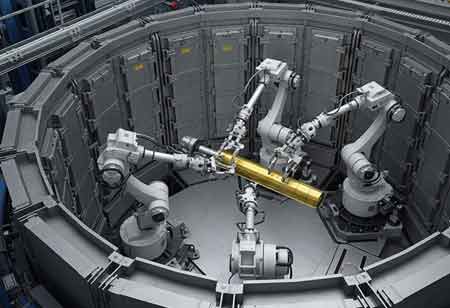CLOSE
Specials
I agree We use cookies on this website to enhance your user experience. By clicking any link on this page you are giving your consent for us to set cookies. More info
Be first to read the latest tech news, Industry Leader's Insights, and CIO interviews of medium and large enterprises exclusively from Energy Tech Review
Thank you for Subscribing
Solar Panels Could Be Installed On All New Buildings In Europe
With plans to boost a drive for renewable energy to replace the continent's reliance on Russian oil and gas

By
Energy Tech Review | Wednesday, May 18, 2022
Stay ahead of the industry with exclusive feature stories on the top companies, expert insights and the latest news delivered straight to your inbox. Subscribe today.
Commission plans for reducing carbon emissions are accelerated by the need to cut dependence on Russian fossil fuels.
FREMONT, CA: With plans to boost a drive for renewable energy to replace the continent's reliance on Russian oil and gas, all new buildings in the EU would be installed with solar panels on their roofs. By 2030, the European Commission wants renewable energy to account for half of the bloc's energy, doubling the current level. According to a copy of the plan seen by the Financial Times and RepowerEU, the overall cost of doing this would be hundreds of billions of euros, offset by an annual €84 billion savings on imported gasoline. One suggestion is to "make rooftop solar installations mandatory for all new and existing buildings of energy performance class D and above [the most energy-intensive]." The initial EU plan aimed for 40 per cent renewables targets to reduce carbon emissions by 55 per cent by 2030 compared to 1990 levels. However, the conflict in Ukraine has prompted Brussels to seek energy independence from Russia, which supplies 40 per cent of the region's gas and 20 per cent of its oil.
Renewables, coupled with liquefied natural gas imports and hydrogen made from renewable electricity, are the most significant ways to fight climate change and achieve energy independence, according to the RepowerEU document, which might yet be altered before publication. The ideas will cost homeowners an extra €309 per year on average. The commission wants member states to designate "go-to" zones with lower environmental criteria and faster approval processes to speed up the development of wind farms and solar arrays.
The plan also addresses gas infrastructure bottlenecks in the EU, which hinder member states from transporting imported gas to neighbours if Russian supplies are cut off. After refusing to settle accounts in roubles, Gazprom, the state-owned firm, has already ceased supplying Poland and Bulgaria. They have been collecting gas from their neighbours, but the bloc's capacity is restricted. The EU wants countries to fund the links from various sources, including the recovery and resilience fund and a single loan facility. According to the study, the majority of member nations have already set aside funds, but they should reconsider their plans. It also calls for a 2 per cent yearly reduction in energy consumption, rather than the present objective of 1.5 per cent. The methods realise that if Russia decides to halt supplies completely, gas rationing will be necessary. According to the report, the chemical, glass, and ceramics industries, which account for half of industrial gas use, will be affected.

Copyright © 2025 Energy Tech Review. All rights reserved






